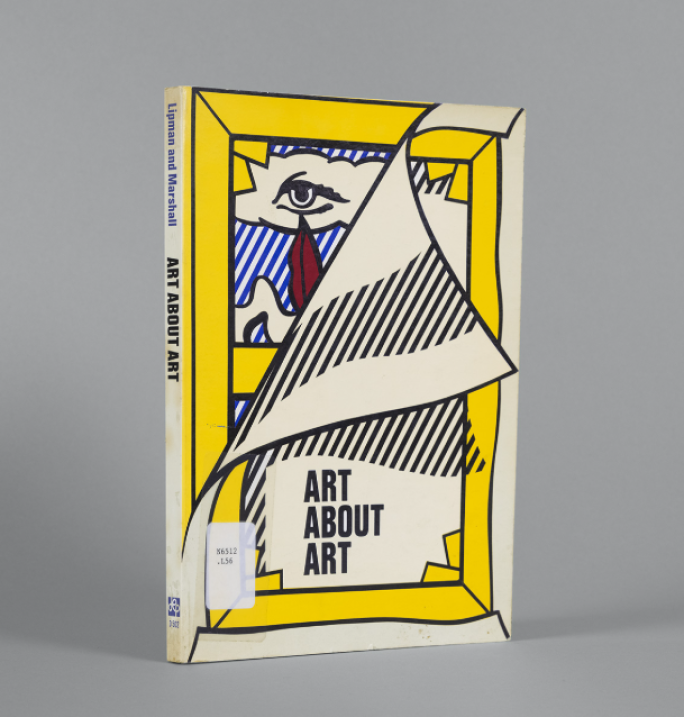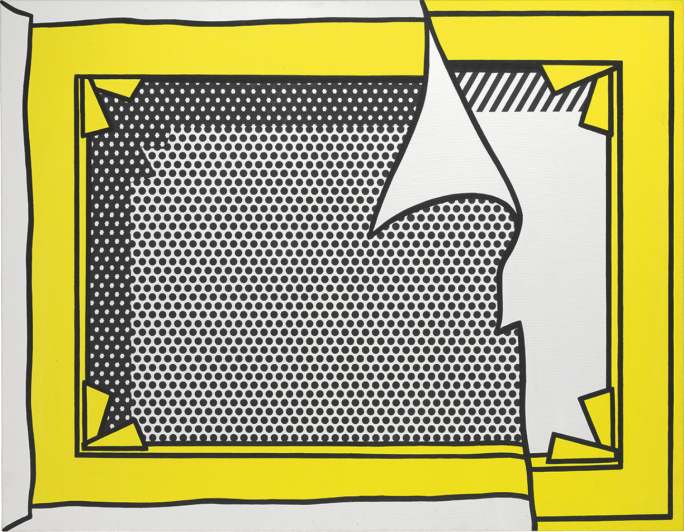“All my art is, in some way, about other art.”
Offering a glimpse into the meticulous preparatory process that began nearly all of his artwork, Roy Lichtenstein’s Cover Image for Art About Art Book (Study) is a masterful representation of the artist’s near constant exploration of the painted surface through the lens of art history, whether it be his own art or that of other modern masters. A study for the cover of the publication and a limited run of posters that accompanied the 1978 exhibition Art About Art at the Whitney Museum of American Art, the present work was commissioned to serve as the representative image of an exhibition that looked at the work of contemporary American artists who take as their subject other art.

True to the premise of the exhibition, Lichtenstein’s cover is doubly referential in that is tied not only to a period of art history – Surrealism, a subject of which Lichtenstein devoted an entire series of paintings to during the same period – and his own art, alluding to his body of Stretcher Frame paintings that engage with the tradition of trompe l’oeil and the nature of painting itself by depicting the back of stretched canvases and their bars, emphasizing their tactile objecthood rather than their traditional purpose of conveying a visual message. In the present rendition, the frame is being peeled away to reveal a Surrealist landscape beneath, wherein a biomorphic cloud evokes the form of an eye and a floating pair of red lips appear transformed as a teardrop, yet another reference to Lichtenstein’s own oeuvre and his Crying Girl paintings of the early 1960s.

Emphasizing Lichtenstein’s fastidious commitment to process, the work features many of the elements that the artist would have used in his preparation for the final image to consider questions of layout, color and visual effect. Situated among meticulously placed taped sections and Pantone color swatches, the image reveals itself as an enduring reminder of Lichtenstein’s unparalleled ability to render surfaces densely layered with his interest in querying the art historical canon and constant exploration of the ways of seeing.

